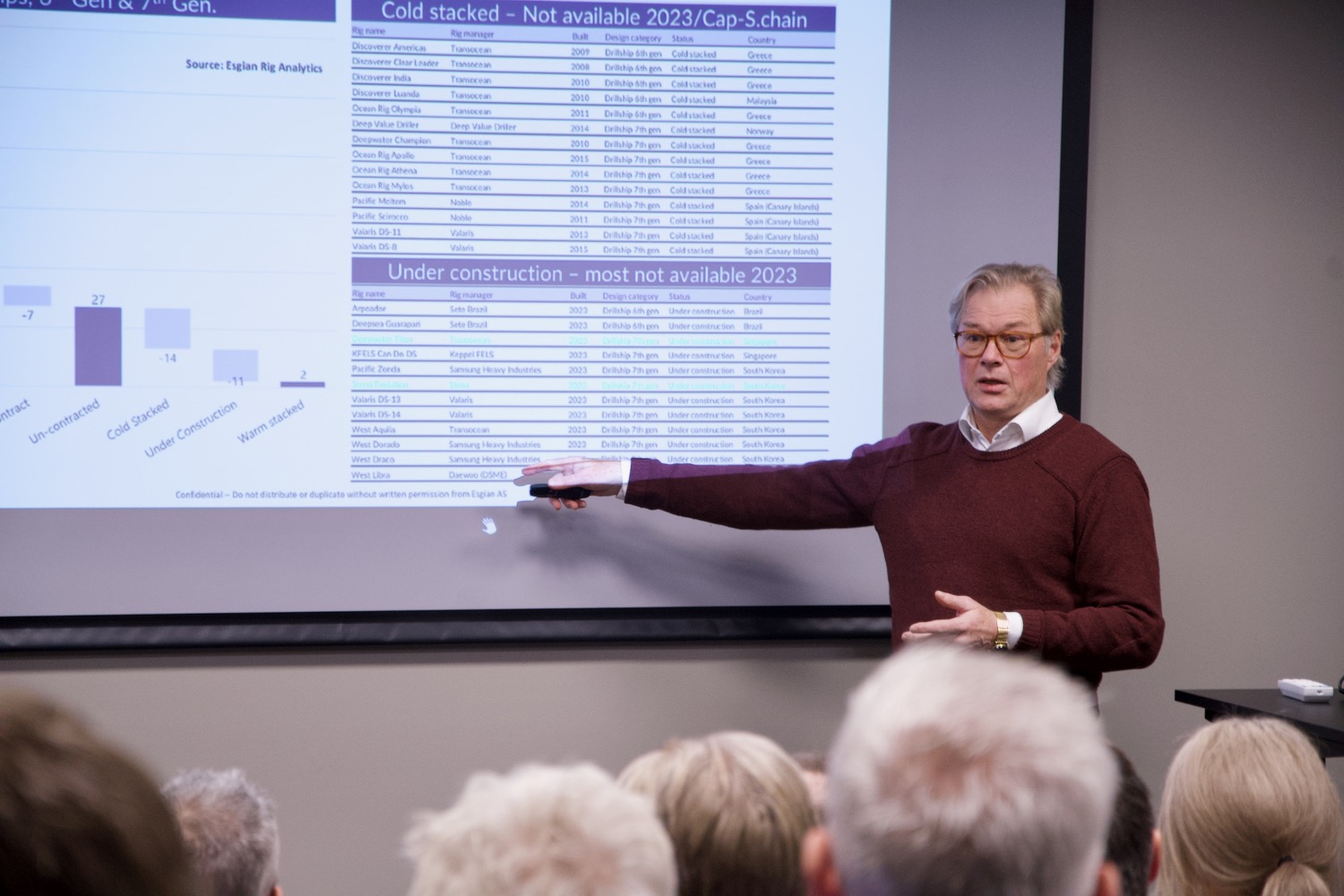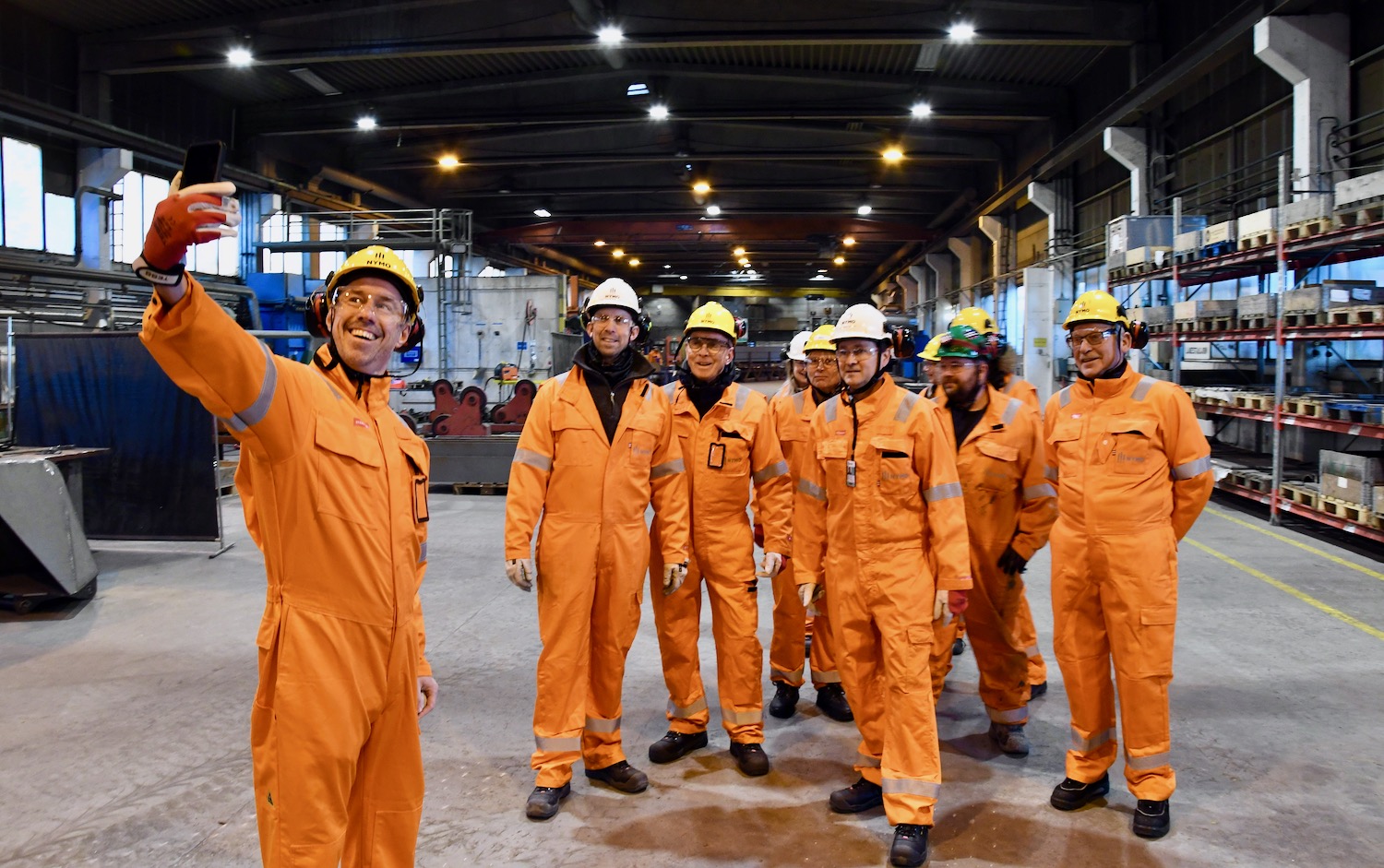“We are entering a multi-year super-cycle. Day-rates and earnings will continue an upward trajectory,” said Erland P. Bassoe, Chairman of Esgian, a Norwegian-based rig analytics expert.
Bassoe presented an overview and an outlook to a room full of suppliers from National Oilwell Varco, HMH, Cameron Sense and more during a GCE NODE event Wednesday.
“Modern drillships is the segment leading the recovery. Day rates have more than doubled since January 2021. 7th generation drillships are now fixed at more than USD 400,000 per day. Global utilization has reached 90 per cent. Supply is tight and long lead times will push rates further. Asset values have more than doubled for all rig types,” said Bassoe.
According to Esgian, the world’s rig fleet is currently at the same level as in 2008, and it is too small to cover global demand. The drillship segment is sold out for 2023 and the premium jackup segment is soon to be sold out. Thus, stacked units are likely to be activated.
“85 rigs, which is equivalent to 12 per cent of the global rig fleet, are cold-stacked and will take between 12 and 16 months to be drilling ready. This is great news for the drilling supplier industry. There is a lot of equipment to be installed and a lot of work to be done to bring cold-stacked rigs back to the market,” said Bassoe.
According to Esgian, the rig market upturn started only eight months ago.
“2023 will be increasingly good for rig owners and suppliers. The only exception is the Norwegian Continental Shelf, which we do not expect to be back until 2024. The harsh environment market is somewhat muted,” said Bassoe.
Esgian numbers show that 75 per cent of the global offshore drilling fleet is currently in production. The offshore drilling fleet has been reduced by 21 per cent (186 rigs) since 2015. There are currently 709 rigs in the world. Jackups (499 units) is the dominant segment, followed by semi-submersibles and drillships.



